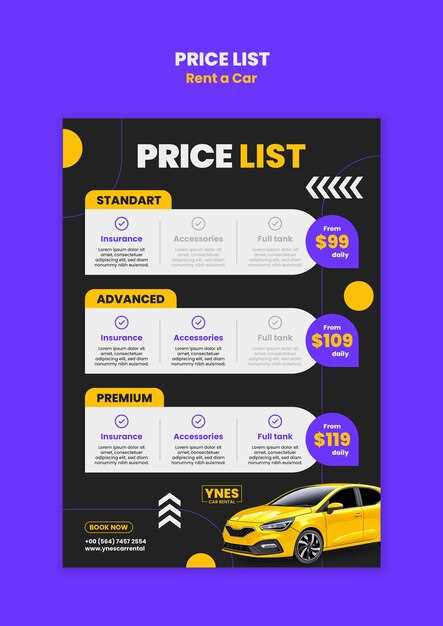
Buying a used race car can be an exciting yet daunting task, especially for those who are new to the world of motorsports. It requires a well-thought-out approach, with a focus on ensuring that the car not only meets performance expectations but is also safe and reliable. A comprehensive inspection is vital in this process, as it helps identify potential issues that could affect the car’s performance on the track.
When considering a used race car, it is essential to have a checklist that covers every critical aspect of the purchase. This list will guide you through the necessary steps to thoroughly evaluate the car’s condition, including its mechanical integrity, history, and any modifications that may have been made. The right inspection process can make all the difference, ensuring that you invest in a vehicle that will provide the thrill of racing without hidden dangers or unexpected costs.
Ultimately, understanding what to look for in a used race car and conducting a meticulous inspection can lead to a rewarding purchase. It not only enhances your chances of success on the track but also ensures that your investment is sound. With the right preparations, you can confidently navigate the complexities of buying a used race car and find the perfect vehicle for your racing endeavors.
Understanding the Car’s Racing History

When considering the purchase of a used race car, it’s crucial to investigate its racing history thoroughly. The history provides insights into the car’s performance, reliability, and any potential issues it may have faced on the track.
Start by obtaining documentation that details the car’s past races. Look for records of competitions, placements, and any championship titles. Such information indicates the car’s competitiveness and might reflect modifications made to enhance its performance.
Investigate any incidents or accidents the car may have been involved in during its racing career. A car that has undergone significant repairs after a serious crash may have underlying issues that could affect its safety and performance. Understanding the severity and nature of past incidents is vital.
Additionally, reach out to previous owners or teams who have raced the car, if possible. Their firsthand accounts can provide valuable knowledge about the car’s upkeep, modifications, and overall racing experience. This can help you gauge whether the car has been well-maintained or neglected.
Never underestimate the importance of the car’s mechanical condition as it relates to its racing history. A history of frequent mechanical failures may indicate that the car is not well-suited for your intended use. Take the time to research the make and model, as some are known for specific strengths or weaknesses in racing environments.
Lastly, consider the community and support available for the car model. Cars with a rich racing heritage often have dedicated support from enthusiasts and professionals, making it easier to source parts and gain advice on repairs and enhancements.
Evaluating the Condition of the Chassis and Bodywork
When purchasing a used race car, assessing the condition of the chassis and bodywork is crucial to ensure that the vehicle is safe and competitive. Here’s a detailed guide on what to examine:
- Chassis Inspection:
- Look for any signs of structural damage, such as bends, cracks, or misalignment. A damaged chassis can lead to handling issues and pose safety risks.
- Check for corrosion or rust, especially in areas that may have been exposed to moisture or chemicals. This can weaken the frame and affect performance.
- Inspect the welds and joins. Quality welds should be smooth and uniform; any irregularities may indicate poor repairs or modifications.
- Bodywork Examination:
- Examine the body panels for dents, scratches, or signs of repair. Bodywork imperfections can affect aerodynamics and overall aesthetics.
- Check the paint condition. Fading or peeling may suggest a lack of care and could indicate underlying issues.
- Assess the fit of the body panels. Uneven gaps between panels may signal accidents or poor assembly, impacting performance and airflow.
- Component Checks:
- Inspect suspension mounting points for wear or damage. These areas bear significant loads and should be in optimal condition.
- Review the condition of the roll cage, if applicable. Ensure it meets safety standards and check for any signs of damage or corrosion.
- Look under the car to examine the undercarriage for leaks or damage that could affect both safety and performance.
In conclusion, a thorough examination of the chassis and bodywork can reveal a lot about the used race car’s history and future performance. Take your time to evaluate these aspects meticulously to make an informed purchase decision.
Inspecting the Engine and Performance Modifications

When buying a used race car, a thorough inspection of the engine and its performance modifications is crucial. The power and reliability of the engine are often what separate a winning vehicle from a mediocre one. Here’s a checklist to help you assess the engine condition and the modifications made to enhance performance.
| Inspection Item | What to Look For |
|---|---|
| Engine Condition | Check for visible leaks, wear, and corrosion. Look for signs of overheating or poor maintenance, such as a dirty oil filter or low oil levels. |
| Compression Test | Perform a compression test on all cylinders to ensure they are within the manufacturer’s specified limits. Uneven compression readings may indicate internal damage. |
| Modification Quality | Inspect all performance modifications, such as turbochargers, exhaust systems, and engine remaps. Verify that they are professionally installed and do not compromise engine reliability. |
| Cooling System | Examine the radiator, hoses, and coolant levels. Ensure that the cooling system is adequate to handle the added power from performance modifications. |
| Fuel System | Check the fuel injectors, fuel pump, and lines. Ensure they are compatible with any modifications, particularly if high-octane fuel is required. |
| Exhaust System | Inspect the exhaust for any modifications that could lead to increased emissions. Ensure the system is in good condition and does not produce excessive noise beyond legal limits. |
| Electrical Components | Check wiring and connectors, especially those modified for performance enhancements. Malfunctions in electrical components can lead to serious performance issues. |
Understanding the engine’s current state and the implications of any modifications is vital for ensuring you are making a sound investment in a used race car. A well-maintained engine optimized for performance can significantly enhance your racing experience while minimizing future repair costs. Always consider having a trusted mechanic review the vehicle before finalizing your purchase.
Reviewing the Car’s Maintenance Records
When considering the purchase of a used race car, one of the most critical steps is reviewing the car’s maintenance records. These documents provide insight into how well the vehicle has been cared for and whether it has undergone necessary repairs and upgrades. A thorough inspection of these records can highlight any recurring issues or significant modifications that could affect the car’s performance.
Start by checking the frequency of routine maintenance tasks such as oil changes, tire rotations, and brake inspections. Frequent service intervals generally indicate a responsible owner who prioritized the car’s health. Look for details about the types of fluids used, as high-quality racing fluids can enhance performance and longevity.
Examine any major repairs documented in the records, particularly those involving the engine, transmission, or suspension systems. These components are vital for a race car’s performance and reliability on the track. Make note of any modifications made to the car, such as changes to the exhaust system or installation of aftermarket parts, which could alter its handling or speed characteristics.
Lastly, inquire about any possible accidents or significant incidents that the car has been involved in. Understanding the history of damage and repairs can give you a clearer picture of the car’s overall condition. Adequate maintenance records will empower you to make a more informed decision when purchasing a used race car, ensuring that you’re investing in a vehicle that will perform reliably on race day.
Checking for Safety Equipment Compliance
When considering a used race car, ensuring that all safety equipment complies with the relevant regulations is paramount. Start with a thorough inspection of the car’s safety features, including the roll cage, harnesses, and fire suppression systems.
The roll cage should be constructed from high-quality materials and must meet the specifications set by the racing organization the car is intended for. Look for signs of damage or inadequate welding, as these could compromise safety during high-speed events.
Next, examine the seat belts or harnesses. Race-specific belts should be in good condition, free of frays and wear. Verify the expiration date, as safety harnesses typically have a limited lifespan and need to be replaced regularly to ensure optimal performance in an accident.
Additionally, check for the presence and functionality of a fire suppression system. This equipment is critical in mitigating fire risks during a race. Ensure that the system is installed correctly and that it has been serviced regularly, as outdated or ineffective systems can lead to severe consequences.
Finally, consult with the seller regarding any past incidents involving the car. This information can provide insight into potential risks and help assess whether the safety equipment has been adequately updated or replaced following any significant events.
Assessing the Overall Value and Resale Potential
When considering the purchase of a used race car, it’s essential to assess its overall value and potential for resale. A thorough inspection and analysis can help determine if the car is a smart investment. Here are some key factors to consider:
- Condition: Evaluate the car’s physical and mechanical condition. Look for any signs of wear, damage, or repairs that could affect performance.
- History: Research the car’s racing history. A vehicle with notable achievements may have a higher value and be more appealing for resale.
- Documentation: Ensure you have access to all maintenance records and previous sale documents. This transparency can increase buyer confidence.
- Market Trends: Analyze the current market trends for similar used race cars. A rising demand can enhance resale potential.
- Modifications: Be aware of any modifications made to the car. While performance upgrades can add value, they may also limit the market of potential buyers looking for specific regulations.
By conducting a comprehensive inspection and understanding these critical aspects, you can make an informed decision that reflects both the car’s current value and its future resale potential. This approach ensures that you are not only purchasing a competitive vehicle but also making a wise investment in the dynamic world of racing.




